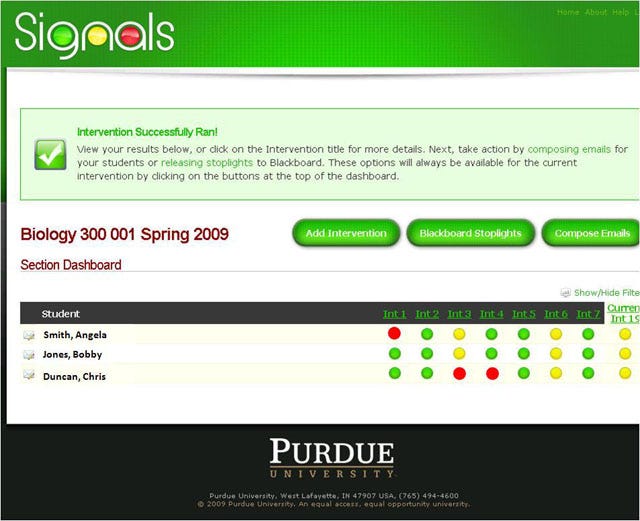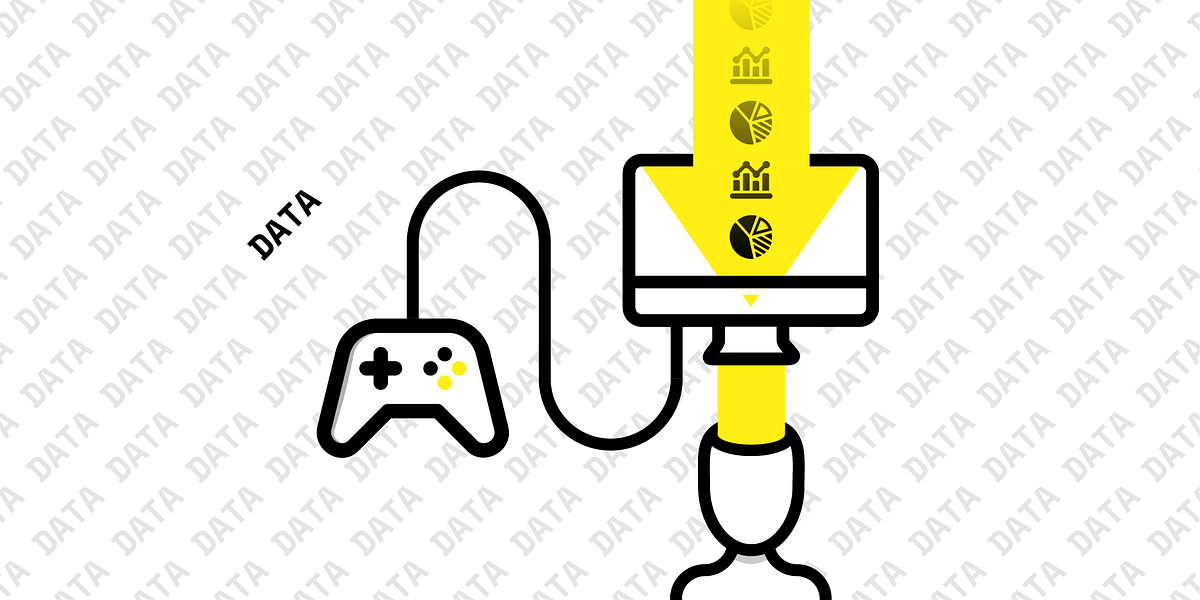Data analysis is used effectively in businesses to help them learn about their past mistakes and make better future decisions, yet this powerful reflection tool is severely under-utilized in learning experiences. This isn’t the first case of technology being better applied in an industry than in education, but it’s more pertinent than it’s ever been.
In the past decade, learning analytics and educational data mining have become important concepts in the minds of educators. According to Wikipedia, they allow for the measurement, collection, analysis and reporting of data about learners and their contexts, for the purposes of understanding and optimizing learning, as well as the environment in which it occurs.
In practice, institutions currently use these tools largely to inform administrators about how to spend their money more effectively and allocate space. While this is important for financial reasons, it misses a massive opportunity to enhance real learning. Learners stand to gain a lot more from having access to their own data and the tools to interpret them.
We can build holistic data-based learning tools by following these six principles of learners by Malcom Knowles and Tom Whitby:
- Learners are internally motivated and self-directed
- Learners bring life experiences and knowledge to learning experiences
- Learners are goal oriented
- Learners are relevancy oriented
- Learners are practical
- Learners like to be respected
They are all interrelated in interesting ways, and each can be amplified with clever implementation of data access and analytics.
Learners are internally motivated and self-directed
We use people’s self-interest in a plethora of content and social media services. Think of how many content aggregators ask you to select the topics you enjoy so they can serve you better content. Look at how data is used by advertisers to then show you ads that are most relevant.
These two techniques, the first active and the second passive, are both intended to keep us engaged, yet very little work seems to be done in this area to allow people to create learning pathways for themselves. Many of the most popular platforms like Udacity, Coursera, and edX, offer people to take any subject they want in any order, but there is still some rigidity to this that isn’t nearly as fluid as what we see in blogging platforms like Medium.

Of course the pitfalls of such high customization implies that people will be stuck in educational echo chambers, much in the same way Facebook users are stuck in bubbles of their own opinions.
This is where the new role of the educational institution and instructor will come in as expert curators and verifiers. Conscious implementation of randomization and other creative techniques can help offset such problems.
Learners bring life experiences and knowledge to learning experiences
Everyone has experiences that could be a beneficial learning opportunity to another person. If someone that keeps a journal were to go through a retrospective and pull out some life lessons they would not only strengthen that learning to themselves, but it’s likely to provide their peers with a much more meaningful less than a textbook example.

It’s incredible that consumer goods companies readily buy data about individuals from the web only to sell them an extra watch, while educational institutions never consider buying the same data and serving it straight to their students to give them perspective on their lives. These learners can then choose to share with others what they’ve learned, or meet like-minded people to reflect and bond.
Learners are goal oriented
The use of data to help professionals and organisations achieve their goals is common practice. Athletes use data to track their biometrics and better plan how to reach their desired weight, muscle mass, heart rate, breathing, etc. Factories monitor their production lines in order to better reduce costs while increasing quality assurance and speed.

Why then do we not liberate data about how learners are progressing with a topic and allow them to see whether or not they’re achieving their goals? A learner who wants to pursue knowledge for its own sake should know what it takes to learn a concept enough in order to be considered a master, whereas someone learning a technique for practical usage should understand how long to spend with it before it becomes functional.

A system called Signals was developed by Purdue a few years ago in order to provide students early warning — as early as the second week of the semester — of potential problems in a course by providing near real-time status updates of performance and effort in a course. While it has been discontinued, a lot of lessons were learned about the import
ance of providing students with data feedback have been implemented in other projects around Purdue.
Learners are relevancy oriented
Relevance is one of the most important variables to successfully teach someone a concept. People want to be able to relate to a subject in their own life and relative to their own experiences.
Providing learners sample data sets so they can create simulations can be an excellent way to highlight relevance. Imagine someone learning an ecological principle or theory and being given the ability to choose historical data relevant to their country, industry, or area of interest. They could then use this data and change some variables to see how the final outcome could have been different, but it’s powerful because one learner was able to apply it to the way sound bounces off walls where as another could see how a soccer player’s bone is impacted by a kick.

An interesting implementation of helping students see the relevance between ideas is Open University’s OpenEssayist. According to an article by The Guardian, the tool “shows students how each sentence in their draft essay relates to others, helping students form a well-structured essay that makes clear connections between different sections and sentences. The tool does not take the place of the teacher; essay marking is still done by humans. Instead, it encourages students’ reflection, supports their writing process and focuses their attention on connections between ideas.”
Learners are practical
Many concepts can only effectively be learned if applied immediately. Much like the application of data in highlighting relevance, simulations can also be used very effectively to make practical what is otherwise highly abstract.
Learning geometry is interesting but highly impractical without concepts such as architecture and construction. Learning about sales techniques is very useful, but without practice an average learner has forgotten most of what they have learned before they walk out of the classroom.

A powerful data set and tool to manipulate the data can help imprint the lesson better in a person’s mind. For example, when consumer goods giant Proctor & Gamble develops new dish washing liquids, they use predictive analytics and modelling to predict how moisture will excite certain fragrance molecules so that the right scents are released at the right time during the dish washing process.
If an existing company can do it, there’s no reason why chemistry couldn’t be taught that way.
Learners like to be respected
Finally, respect can determine the difference between a classroom with healthy collaboration and critique, or learners that rush out as soon as the session is over.
Respect will be achieved when many of the above principles happen but there are other ways this can be achieved with data. Look at forums and communities like Twitter or Reddit. People really enjoy having their content “Liked” and “Upvoted”, and currently these mechanics are used to create strong attachments to the platform.

What if learners were able to see who liked their comments in class, or see the appreciation they received for staying an extra hour and helping a peer with a challenging problem? What if the essays that learners submit as homework are able to be referenced by others and the original writer can see how many references they were in and how their content impacted the learning of others?
Of course, bad data sets can also amplify problems and lead to even further confirmation bias, so the role of institutions in this will be to ensure that the data is as clean as possible and that the learners are aware of the errors and discrepancies that data sets may conceal.
If such measures are taken, these six principles combined with data can unlock learners’ ability to reflect and boost curiosity. Open data can increase the sense of participation in a classroom, reinforce abstract concepts by providing learners with opportunities to apply them, and help reveal the impact of small decisions at scale. It can highlight the interrelations between subjects and show how topics that seem unrelated on the surface are actually incredibly relevant to each other.
Revealing these kinds of connections between ideas and people in a learning environment can help learners gain a broader perspective on the world and strengthen the bonds between their peers.
The purpose of good educational technology is not to replace the teacher, but rather to create a more level playing field between all students so that in-person time amongst learners and instructors can be better spent.
